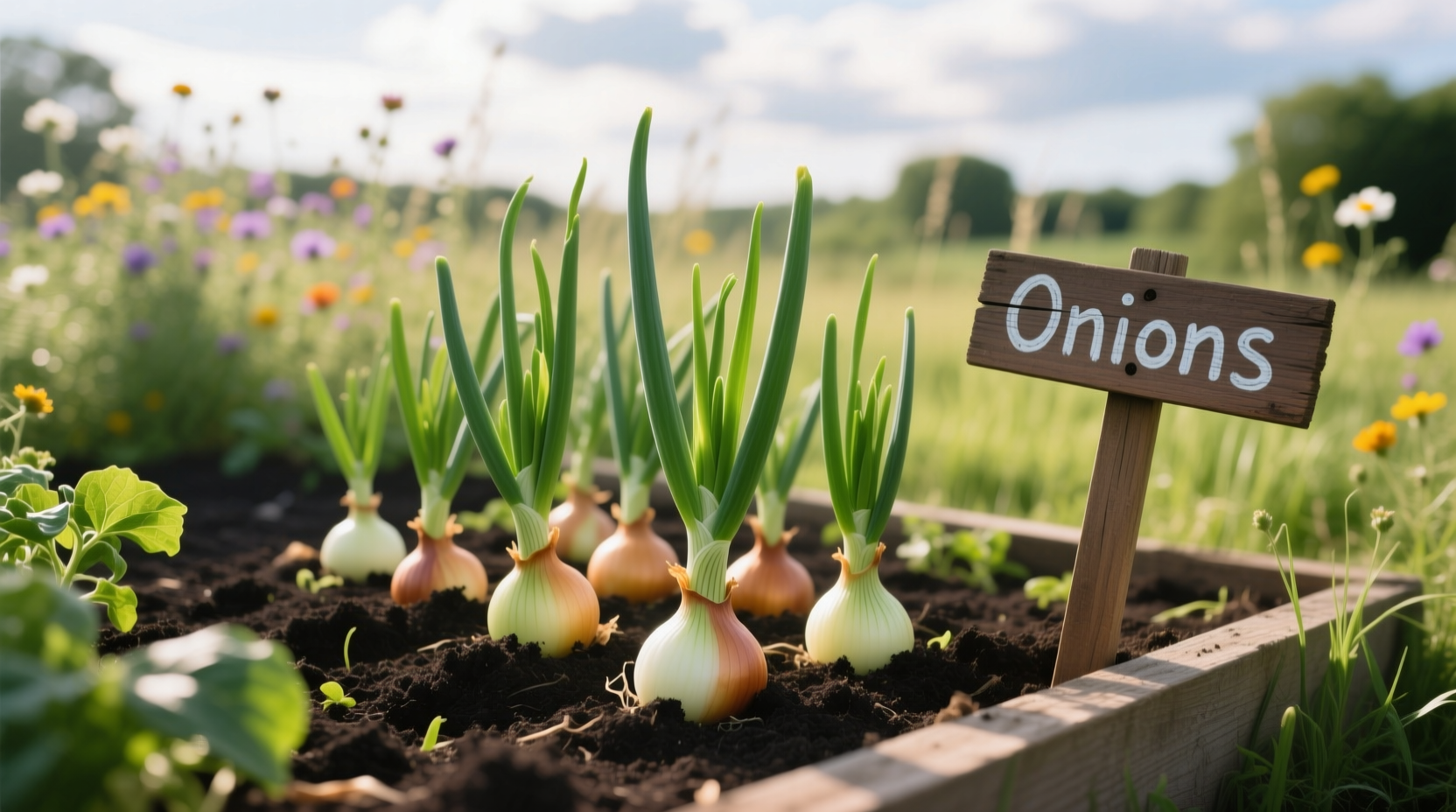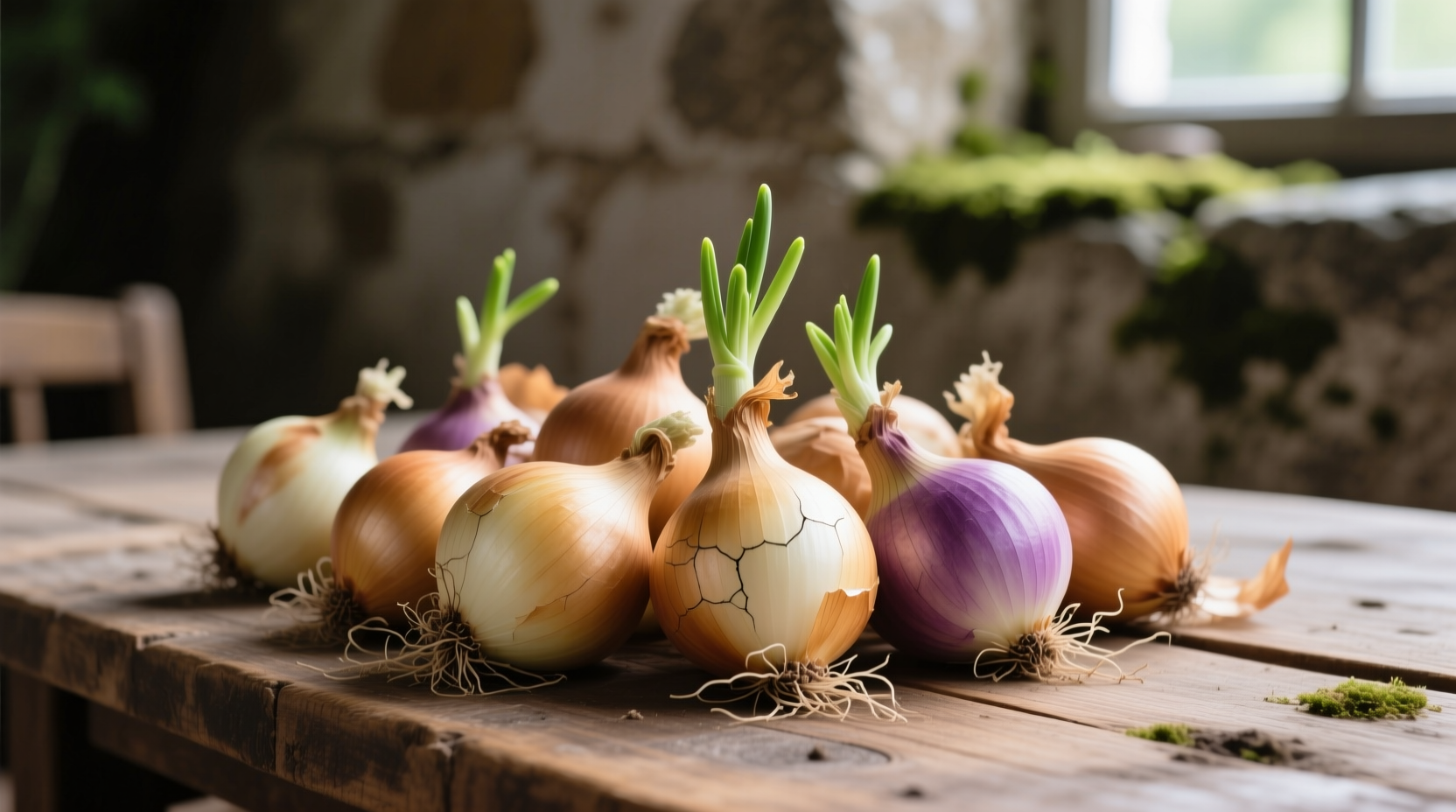Ready to grow your own chemical-free onions with minimal effort? Organic onion sets provide home gardeners with the simplest method to cultivate flavorful, pesticide-free onions while supporting sustainable gardening practices. This comprehensive guide reveals exactly when to plant, how to prepare your soil, and proven organic care techniques that yield abundant harvests—whether you're a first-time gardener or expanding your existing organic plot.
What Exactly Are Organic Onion Sets?
Organic onion sets are small, partially grown onion bulbs (typically ½ to 1 inch in diameter) that have been cultivated according to USDA National Organic Program standards. Unlike conventional sets, organic varieties are grown without synthetic pesticides, chemical fertilizers, or genetically modified organisms. The certification process requires third-party verification that growers follow strict organic protocols throughout the entire production cycle—from seed selection to harvest and storage.
These sets differ from onion seeds and transplants in both planting method and growth timeline. While seeds require 14-16 weeks to mature and demand careful temperature control, sets establish roots quickly and typically mature in 8-10 weeks after planting. This makes them ideal for gardeners with shorter growing seasons or those seeking faster results.
| Characteristic | Organic Onion Sets | Conventional Onion Sets |
|---|---|---|
| Production Method | Grown without synthetic pesticides/fertilizers | May use synthetic chemicals |
| Certification | USDA Organic certified (third-party verified) | No certification required |
| Soil Impact | Builds soil health through organic matter | Potential soil degradation from chemicals |
| Flavor Profile | Often described as sweeter, more complex | Can have chemical aftertaste |
| Cost | 15-25% higher | Generally less expensive |
Why Choose Organic Over Conventional Sets?
The decision to grow organic onions extends beyond personal health considerations. Research from the USDA Agricultural Marketing Service shows organic farming practices improve soil microbial activity by up to 40% compared to conventional methods. This enhanced soil biology directly translates to more nutrient-dense produce and better water retention in your garden.
When you plant organic sets, you're avoiding potential exposure to common onion pesticides like imidacloprid and chlorpyrifos. The Environmental Protection Agency has documented these chemicals' harmful effects on beneficial insects and potential human health risks. Organic growers instead use natural pest control methods such as companion planting with carrots or using beneficial insects.
Optimal Planting Timeline for Organic Onion Sets
Timing your planting correctly makes the difference between a bountiful harvest and disappointing results. The organic onion growing season follows this predictable pattern:
| Time Period | Critical Actions | Regional Considerations |
|---|---|---|
| 4-6 weeks before last frost | Plant sets 1-2 inches deep, 4-6 inches apart | Cold climates: Use black plastic mulch to warm soil |
| 6-8 weeks after planting | Apply organic nitrogen fertilizer (blood meal or fish emulsion) | Warm climates: Provide afternoon shade |
| When tops begin falling over | Stop watering, allow bulbs to mature | All regions: Check for mature bulbs weekly |
| 3-4 weeks after tops fall | Harvest, cure in dry, shaded area for 2-3 weeks | Humid regions: Extend curing time to prevent rot |
Preparing Your Garden Bed for Success
Organic onion sets thrive in well-prepared soil that mimics their natural growing conditions. Start by testing your soil pH—onions prefer slightly acidic conditions between 6.0 and 6.8. Amend your soil two weeks before planting with:
- 3-4 inches of fully composted organic matter
- 1 pound of organic bone meal per 100 square feet (for phosphorus)
- Wood ash (for potassium, if soil test indicates deficiency)
Create raised beds 4-6 inches high to ensure proper drainage, which prevents the rot that commonly affects onion roots. Avoid using fresh manure, as it can cause excessive top growth at the expense of bulb development.
Step-by-Step Planting Guide
Follow these precise steps for optimal results with your organic onion sets:
- Choose firm, dry sets without signs of sprouting or mold (larger sets produce bigger onions but are more prone to bolting)
- Separate sets by size—plant larger ones (¾ inch+) for green onions, medium sets (½ inch) for storage onions
- Create shallow trenches 1-2 inches deep, spacing rows 12-18 inches apart
- Place sets with pointed end up, covering with 1 inch of soil
- Water thoroughly but avoid saturating the soil
- Apply 2-3 inches of organic straw mulch to suppress weeds and retain moisture
For continuous harvest, plant sets every 2-3 weeks through early spring. This staggered approach ensures you'll have green onions throughout the season while allowing your main crop to mature for storage.

Organic Care and Maintenance Techniques
Maintaining your organic onion patch requires consistent attention to three critical factors: water, weeds, and pests. Unlike conventional growers who might use chemical solutions, organic gardeners rely on these proven methods:
Watering strategy: Onions need consistent moisture—about 1 inch per week—but are sensitive to overwatering. Use drip irrigation or soaker hoses to deliver water directly to roots while keeping foliage dry. Reduce watering significantly when bulbs begin to swell (typically 90 days after planting) to encourage proper curing.
Weed control: Hand-pull weeds carefully since onions have shallow roots. Apply additional straw mulch (up to 4 inches total) to suppress weeds without disturbing roots. Avoid cultivating deeply around established plants.
Pest management: Common onion pests like thrips and onion maggots can be controlled organically through:
- Companion planting with carrots (masks onion scent from pests)
- Applying beneficial nematodes for soil-dwelling pests
- Using floating row covers immediately after planting
- Creating garlic spray (2 cups chopped garlic steeped in 1 quart water for 24 hours)
Harvesting and Storage Best Practices
Knowing when to harvest determines your onions' storage potential. Watch for these visual cues that indicate maturity:
- Top leaves begin to yellow and fall over naturally
- Neck of the onion becomes soft and begins to collapse
- Bulb wrappers turn dry and papery
When approximately 75% of your plants show these signs, stop watering completely. Wait 7-10 days, then carefully lift bulbs from the soil using a garden fork. Cure onions in a dry, shaded, well-ventilated area for 2-3 weeks until necks are completely dry and outer skins rustle when touched.
For long-term storage (6-8 months), keep cured onions in mesh bags or wooden crates in a cool (32-40°F), dark place with 65-70% humidity. Never store onions near potatoes, which release moisture and gases that cause onions to spoil faster.
Frequently Asked Questions
Can I grow organic onions in containers?
Yes, you can successfully grow organic onions in containers with proper drainage. Use pots at least 8 inches deep filled with organic potting mix. Plant sets 1 inch deep with 3-4 inches between plants. Container-grown onions require more frequent watering and monthly applications of liquid organic fertilizer. Harvest green onions when tops reach 6 inches tall, or allow bulbs to mature for storage onions.
Why are my organic onion sets bolting (sending up flower stalks)?
Bolting occurs when onion sets experience temperature fluctuations, typically exposure to cold followed by warm weather. Larger sets (over ¾ inch) are more prone to bolting. If bolting occurs, remove the flower stalk immediately—the bulb will still grow but won't store well. For future plantings, choose appropriate varieties for your climate zone and plant at the correct time to avoid temperature stress.
How do I prevent my organic onions from rotting during storage?
Proper curing is essential for storage success. After harvesting, cure onions in a dry, shaded area with good air circulation for 2-3 weeks until necks are completely dry. Store only perfectly formed bulbs with undamaged skins. Maintain storage conditions at 32-40°F with 65-70% humidity. Check stored onions monthly and remove any showing signs of decay to prevent spread.
Are organic onion sets more expensive than conventional ones?
Yes, organic onion sets typically cost 15-25% more than conventional sets due to the certification process and labor-intensive growing methods. However, the price difference represents only a small portion of your overall gardening investment. When calculated per pound of harvested onions, the cost difference becomes negligible, especially considering the environmental benefits and potential health advantages of growing without synthetic chemicals.











 浙公网安备
33010002000092号
浙公网安备
33010002000092号 浙B2-20120091-4
浙B2-20120091-4